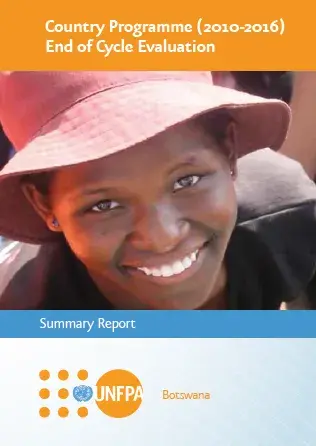Context
The report presents the results of the final evaluation of the Government of Botswana (GoB)/UNFPA country programme 2010-2016. The purpose of the evaluation was to enhance UNFPA’s accountability and contribute to the evidence base to inform the next country programme (CP).
Objectives
The objectives of the evaluation were to:
1. Provide an independent assessment of the progress of the CP towards achieving the programme outputs and outcomes in the CP results framework
2. Assess the extent to which the implementation framework (partnership strategy; capacity building, quality support and assurance, execution/implementation arrangements; cash transfer modalities; and monitoring and evaluation) enabled or hindered achievement of the results chain, i.e. what worked well and what did not work well
3. Assess country office (CO) positioning within the development community and with national partners, including its ability to respond to national needs and to add value to country development results
4. Identify success stories, if any, and document the lessons learnt in programme implementation, management and coordination.
Methodology
The evaluation was structured around two categories of evaluation criteria: i) relevance, effectiveness, efficiency, sustainability, and ii) the criteria of UNFPAs responsiveness, coordination with UNCT and UN Delivering as One, Cross cutting themes of human rights , gender mainstreaming as well as South to South cooperation.


